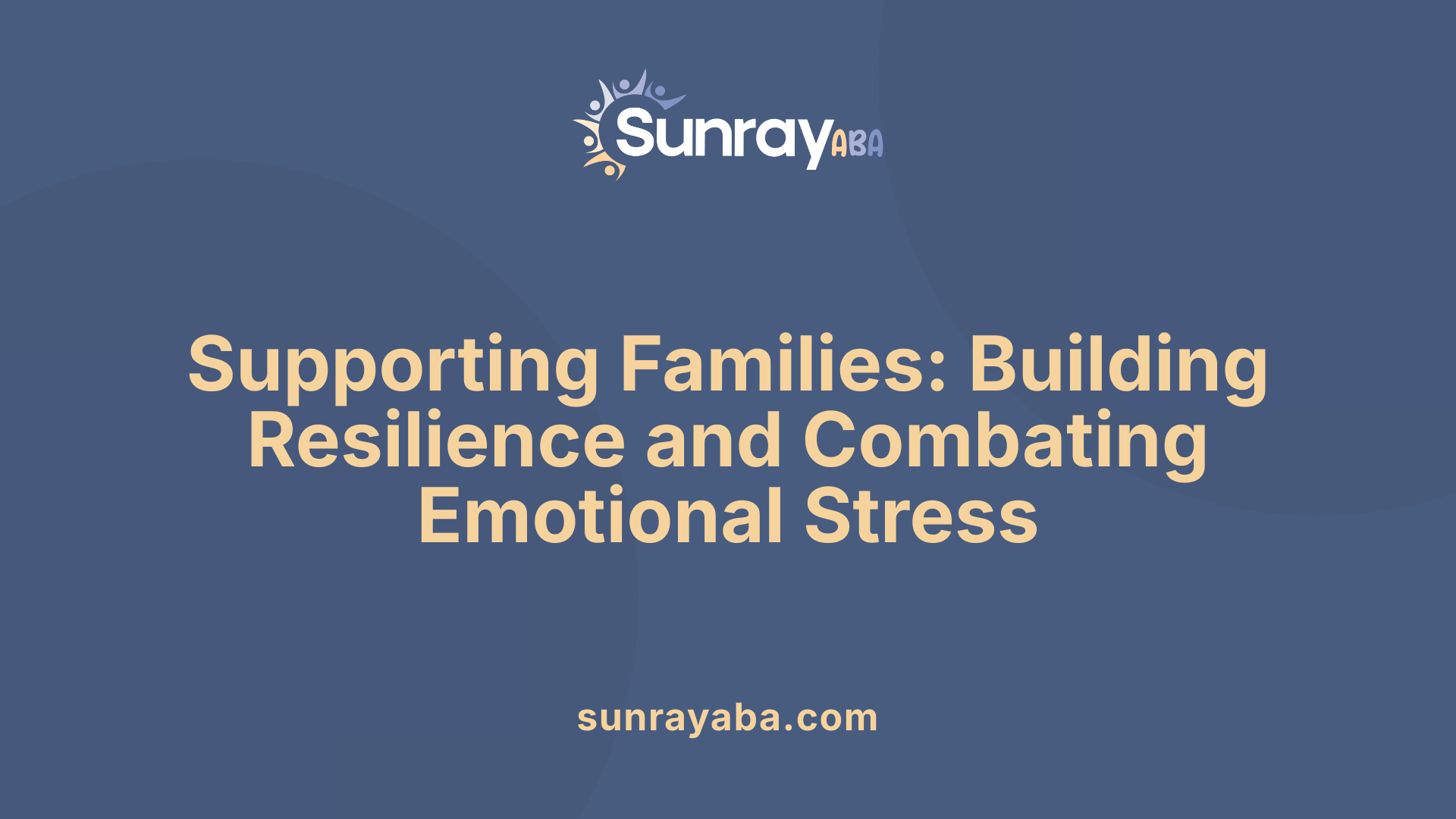Elopement and Autism

Understanding Elopement in Autism Spectrum Disorder
Elopement, also known as wandering, poses a significant safety concern for children with autism spectrum disorder (ASD). This behavior involves leaving a safe, monitored environment often without warning, leading to increased risks of injury or death. With nearly 50% of children with ASD having tried to elope at least once after the age of 4, it is crucial for caregivers, educators, and communities to understand the underlying causes, risks, and effective preventative strategies.
Prevalence and Age of Onset of Elopement in Autism
How many autistic children elope?
Research indicates that approximately 49% of children with autism have attempted to elope at some point. This high prevalence underscores the seriousness of wandering behaviors within the autism community. Among these children, about 35% attempt to elope at least weekly, reflecting the frequency and potential danger of such actions. The risks associated with elopement are significant, with drowning constituting 90% of elopement-related deaths among autistic individuals. Children with autism are roughly four times more likely to leave a safe environment without permission compared to their neurotypical peers. Due to this widespread concern, families are encouraged to adopt prevention strategies and create safety plans to better protect at-risk children.
Typical ages during which elopement occurs
Elopement in autism most commonly occurs between the ages of four and seven, a period when behaviors often peak. Studies show that 46% of children with autism attempt to elope within this age range. However, the risk does not disappear after early childhood. Data reveal that 27% of children aged eight to eleven have also attempted to elope, indicating that wandering behaviors can persist into later childhood. The behavior tends to diminish with age, yet some children continue to wander into adolescence and even into teenage years. These findings highlight the importance of ongoing vigilance and safety measures throughout childhood and beyond.
Persistence of wandering behavior into adolescence
While elopement tends to decrease in frequency as children grow older, it does not eliminate the risk entirely. Some children with autism continue to attempt wandering well into adolescence. For example, research shows that a notable percentage of older children and teenagers still engage in elopement, which can be driven by ongoing curiosity, routine changes, or environmental triggers. Consequently, families and caregivers need to maintain safety precautions, such as securing home environments, ongoing teaching of safety skills, and community awareness programs. This persistent risk emphasizes that elopement prevention is a continuous process throughout all stages of development.
Understanding the Causes and Triggers for Elopement
What are the causes and reasons for elopement behaviors in individuals with autism?
Children and individuals with autism often engage in elopement, or wandering, due to a variety of underlying reasons. These behaviors are typically goal-directed, driven by a desire to explore, escape stressful or undesirable situations, or reach a particular destination that provides comfort or stimulation. Curiosity and the natural tendency to explore their environment play significant roles in this behavior.
Unmet needs, such as a lack of engaging activities or sensory stimulation, can also lead children to leave safe environments. Routine changes often unsettle children with autism, prompting them to wander as a way to cope with anxiety or confusion. Additionally, some elopements are triggered by sensory overload—when an environment becomes overwhelming, children might bolt to find relief or escape discomfort.
Other triggers include fight-or-flight responses, which can occur if a child perceives a threat or stressful situation, and difficulties with communication that leave children unable to express their needs or discomforts effectively. This combination of factors makes understanding each child's unique triggers essential for creating effective prevention plans. Interventions often focus on addressing these reasons through behavioral strategies and environmental modifications.
What role do sensory issues play in wandering for children with autism?
Sensory processing differences are a prominent factor in wandering behaviors among children with autism. These children may actively seek sensory stimulation, such as running, jumping, or exploring tactile or auditory inputs, which can motivate wandering as a form of sensory gratification.
Conversely, many children wander as a way to escape overwhelming sensory environments. Loud noises, bright lights, textures, or textures that are too intense can cause distress, leading children to bolt in search of relief.
Sensory overload often triggers a fight-or-flight response, whereby the child attempts to escape the overwhelming situation. In some cases, children may engage in sensory-seeking behaviors intentionally to fulfill their need for stimulation, which can increase the risk of elopement.
Addressing sensory needs involves implementing therapies that promote sensory regulation, environmental adjustments to reduce overload, and teaching children self-awareness and coping skills. Such strategies help minimize the likelihood of elopements driven by sensory factors.
How do routine changes influence wandering behaviors?
Routine stability provides a sense of security and predictability for many children with autism. Disruptions to their established routines—such as changing schedules, environments, or caregiver patterns—can lead to increased anxiety, stress, and frustration.
These feelings can act as triggers for wandering, as children may attempt to escape from the distress caused by routine changes. For some, wandering becomes a way to seek out familiar or preferred activities or to find a safe space where they feel more comfortable.
To mitigate this, caregivers can prepare children in advance for routine changes using visual supports, social stories, and gradual transitions. Consistent routines and predictable environments help maintain a sense of security.
Incorporating transitional tools, reinforcing safety behaviors, and providing reassurance can reduce the likelihood of wandering following routine disruptions. Recognizing and managing routine-related stressors are critical components of a comprehensive wandering prevention strategy.
Risks and Safety Concerns Associated with Autism Wandering

What risks and safety concerns are linked to autism-related wandering?
Elopement or wandering in children with autism presents serious safety challenges. These behaviors can lead to life-threatening situations such as drowning, traffic injuries, and falls. It is estimated that drowning accounts for about 46% of injury-related deaths among autistic children who wander, making it the leading cause of mortality linked with this behavior. Traffic injuries also pose a significant threat, with roughly 24% of injured children at risk of being hit by vehicles.
Environmental factors such as bodies of water, busy streets, and unsupervised outdoor locations greatly elevate these dangers. Children who elope can quickly find themselves in environments where hazards like water, fast-moving vehicles, or unlit areas increase the likelihood of accidents.
Given these risks, families and caregivers must implement vigilant safety measures. Strategies include securing home entrances with locks and alarms, teaching children safety commands, using GPS tracking devices, and ensuring constant supervision outdoors. Creating awareness about potential hazards is vital to minimizing the incidence of dangerous wandering episodes.
Emergency Preparedness and Family Safety Planning

Developing comprehensive emergency response plans
Creating a detailed safety plan for autism-related wandering is crucial for families. This includes securing access points with locks, alarms, and fencing around the home to prevent accidental elopement. Family emergency plans should encompass steps for various environments such as home, school, and community settings. These plans should include current photographs of the child, detailed descriptions, and up-to-date contact information. Using GPS tracking devices or medical ID bracelets can facilitate quick location if the child wanders. It’s also essential to teach children safety skills, like recognizing traffic signals, responding to basic commands, and understanding when to seek help.
Community involvement enhances safety. Families can inform neighbors, local police, and fire departments about the child’s wandering tendencies. Installing safety signs or window restrictors and using harnesses or walk reins in outdoor areas can prevent wandering. Securing water sources and vehicle access adds extra layers of protection. Regularly practicing emergency response drills with family members and caregivers ensures everyone is prepared to act swiftly.
Steps for immediate actions if a child elopes
When a child with autism signs of elopement occur, quick and calm action is vital. First, if the child is visible but out of reach, immediately run after them if safe. Calling out to the child using familiar safety commands can sometimes help. Alert neighbors by knocking or calling them, and contact emergency services to report the situation.
Sharing current photos and GPS tracking information with responders greatly improves the chances of locating the child swiftly. Search nearby areas the child might go, such as parks, neighbors' yards, or places previously visited. Families should refer to their pre-established emergency plan, which should include all essential contact numbers for police, fire, and medical responders, as well as a list of safe locations.
Informing community members about the child’s needs ensures their cooperation in search efforts. Immediate response efforts should be coordinated with local agencies to facilitate a rapid and organized search, minimizing the time the child is missing.
Engaging community and emergency services
Community engagement is a vital component of safety planning. Families can work with local police, fire departments, and community groups to develop familiarity and trust. Many agencies offer specialized training on handling wandering incidents involving children with autism.
Enrolling children in swim lessons and teaching water safety significantly reduce drowning risks. Installing alarms on windows and doors, and using GPS devices, are proven tools that can alert caregivers immediately. Many organizations, such as the National Autism Association and the National Center for Missing and Exploited Children, provide resources including safety checklists, emergency alert forms, and detailed action plans.
Training family members, teachers, and community watchdogs on response protocols ensures a coordinated effort during emergencies. Collaborating with community agencies helps in creating a support network that is ready to respond effectively if a wandering incident occurs. By combining technology, education, and community resources, families can create a safer environment for children at risk of elopement.
The Psychological and Emotional Impact on Families

How does wandering affect families emotionally and psychologically?
Wandering behaviors in children with autism significantly impact families, creating high levels of stress and emotional strain. Parents and caregivers often experience feelings of fear, anxiety, and helplessness, especially when children attempt to elope repeatedly or go missing for extended periods.
Many families report that managing these behaviors interferes with their sleep—about 43% say wandering prevents restful sleep—and leads to emotional exhaustion. The constant need for vigilance to prevent potential dangers, such as drowning or traffic accidents, can result in caregiver burnout.
The social isolation of families increases as many avoid outdoor activities or community outings to prevent wandering incidents. This withdrawal can exacerbate feelings of loneliness and depression. The relentless worry about safety and the possibility of tragedy can diminish quality of life for both the child and the family.
Family strategies for coping and resilience
To cope with the emotional toll, families often develop tailored safety plans, such as installing locks, alarms, and GPS tracking devices. Functional communication training (FCT) and behavioral interventions help reduce the frequency of wandering behaviors.
Building a resilient mindset involves creating a strong support network of friends, family, and community resources. Sharing experiences with other families facing similar challenges provides emotional relief and practical advice.
Educating oneself about autism and wandering triggers fosters a proactive approach, reducing feelings of helplessness. Engaging in respite care and seeking professional counseling can help caregivers manage stress and maintain their mental health.
The importance of community and support networks
Community involvement plays a vital role in safeguarding children and supporting families. Informing neighbors, teachers, and local authorities about the child’s wandering risks creates a safety net.
Programs that involve local police and emergency services foster greater understanding and preparedness, ensuring immediate response when needed. Resources like safety checklists, emergency alert forms, and community watch programs empower families.
Organizations such as the National Autism Association and Autism Speaks offer essential tools and guidance for creating personalized safety plans. Participating in support groups helps families share insights, provide mutual encouragement, and reduce feelings of isolation.
Creating a comprehensive community support system not only helps prevent wandering incidents but also offers emotional relief by reaffirming that families are not alone in their struggles.
| Aspect | Description | Additional Notes |
|---|---|---|
| Emotional Impact | Elevated stress, anxiety, sleep disturbance, emotional exhaustion | High caregiver burden, social isolation |
| Coping Strategies | Safety devices, behavioral interventions, community involvement | Resilience through support, education, professional help |
| Community Support | Awareness, local safety plans, shared resources | Empowerment through collective effort |
| Safety Tools | Locks, alarms, GPS trackers, ID bracelets | Practical safety measures |
| Support Resources | Support groups, counseling, educational programs | Emotional and informational assistance |
Understanding the psychological toll of wandering and implementing combined safety and support strategies are crucial for enhancing the well-being of families and protecting children with autism from risks associated with elopement.
Innovative Interventions and Future Directions in Elopement Prevention

What intervention techniques and safety strategies are currently being developed or studied to prevent autism elopement?
Researchers and practitioners in the field of autism are actively exploring and testing a variety of innovative intervention techniques and safety strategies to address wandering and elopement behaviors. One of the most promising developments involves emerging technologies like virtual reality (VR), robotics, and artificial intelligence (AI).
VR offers immersive environments that simulate real-life situations, allowing children with autism to practice safety behaviors such as crossing streets, responding to alarms, or reacting appropriately to unfamiliar stimuli in a safe and controlled manner. These virtual scenarios help children develop the skills necessary to navigate potential dangers without physical risk.
Robotics are also being employed as engaging educational tools to teach social cues, safety commands, and functional communication skills. Robots can be programmed to interact with children in predictable ways, encouraging behaviors that reduce wandering risks while making learning engaging.
Alongside technological advances, behavioral strategies like positive reinforcement, functional communication training (FCT), and graduated exposure continue to be foundational. These methods focus on teaching children alternative ways to communicate needs or escape from stressful situations, reducing the motivation to wander.
Wearable devices equipped with GPS technology are increasingly popular for real-time location tracking. These tools often connect to mobile apps that send alerts if a child moves beyond a certain boundary, enabling caregivers to respond swiftly.
Further integrating AI-driven monitoring systems, these devices can learn individual patterns and adapt alerts or interventions accordingly, personalizing safety measures for each child. Such adaptive systems can identify early signs of exit-seeking behaviors and notify caregivers proactively.
Research underscores that combining technological innovations with traditional behavioral interventions enhances effectiveness. For example, integrating virtual reality training with wearable GPS devices provides a comprehensive safety net tailored to the child's specific needs.
Community engagement and policy support are also critical. Educating neighbors, teachers, and first responders about these tools and strategies ensures a wider network of safety. Policies promoting the development and accessibility of such technologies are vital to sustain ongoing progress.
In summary, the future of autism wandering prevention lies in leveraging cutting-edge technology alongside evidence-based behavioral practices. This integrated approach aims to reduce wandering incidents significantly, protect children from harm, and alleviate the high stress experienced by families.
A Collective Approach to Safety and Support
Addressing elopement in autism requires a multifaceted approach involving families, communities, educators, and policymakers. Prevention and safety measures must be tailored to each child's unique needs, with ongoing education, technological tools, and community involvement playing vital roles. By fostering awareness, implementing effective strategies, and supporting families emotionally and practically, we can work toward reducing risks and ensuring that children with autism are safer and more supported in their daily lives.
References
- Autism and Elopement: What You Need To Know About Wandering
- Elopement Behavior in Kids with Autism
- Occurrence and Family Impact of Elopement in Children With Autism ...
- ELOPEMENT PREVENTION CAREGIVERS - The Autism Project
- Elopement – What Is It? - Lighthouse Autism Center
- Wandering - National Autism Association
- Wandering prevention | Autism Speaks
- Autism Elopement: Causes, Risks, and Prevention
- Wandering (Elopement) | Child Development - CDC
- Elopement – Prevention & Safety - Lighthouse Autism Center